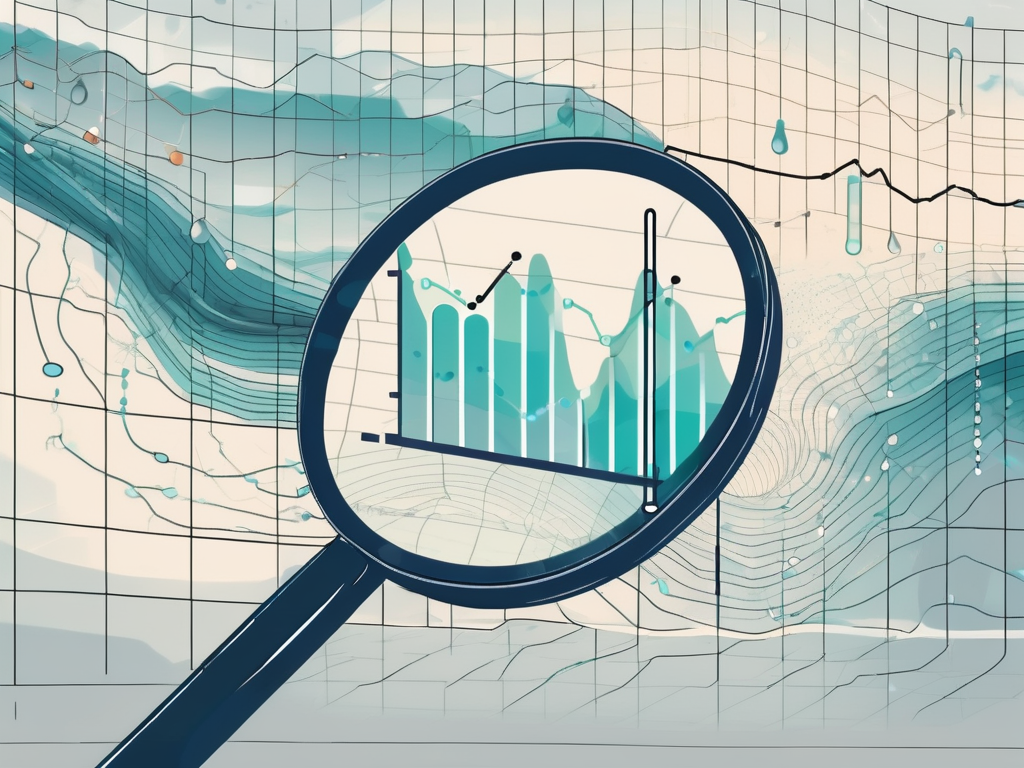
Busting Common Misconceptions About Data Analytics in Groundwater Management
Managing groundwater resources is a critical task that requires accurate and timely information. As technological advancements continue to shape our world, data analytics has emerged as a powerful tool in groundwater management. However, there are several misconceptions surrounding the use of data analytics in this field. In this article, we will debunk these myths and shed light on the true potential of data analytics in groundwater management.
Understanding the Role of Data Analytics in Groundwater Management
Before we address the misconceptions, let's first define what data analytics entails in the context of groundwater management. Data analytics involves the systematic collection, analysis, interpretation, and presentation of data to gain insights and inform decision-making. It allows us to uncover patterns, trends, and relationships that may not be apparent through traditional methods.
Groundwater management is of utmost importance due to the critical role groundwater plays as a vital source of freshwater. With increasing water scarcity and the growing demand for sustainable water management practices, the need for effective groundwater management has never been more pressing.
Defining Data Analytics
Data analytics refers to the process of extracting valuable insights from a vast amount of data through various statistical, mathematical, and computational techniques. It involves collecting data from different sources, transforming it into a structured format, analyzing it using advanced algorithms, and presenting meaningful results that can guide decision-making.
Groundwater management can greatly benefit from data analytics as it enables us to make evidence-based decisions, optimize resource allocation, and identify potential risks and opportunities. By harnessing the power of data analytics, we can make informed choices that lead to more sustainable and efficient groundwater management practices.
The Importance of Groundwater Management
Groundwater serves as a vital source of freshwater for drinking, irrigation, industrial use, and ecosystem support. It plays a crucial role in sustaining agriculture, supporting economic activities, and ensuring the well-being of communities around the world.
However, groundwater resources are finite and vulnerable to overexploitation, contamination, and depletion. Effective groundwater management is crucial to ensure the sustainability and availability of this valuable resource for future generations.
Groundwater management involves monitoring groundwater levels, quality, and flow rates, as well as implementing measures to mitigate risks such as pollution, depletion, and saltwater intrusion. It requires accurate and reliable data to make informed decisions and develop effective management strategies.
One of the key challenges in groundwater management is the complexity of the hydrological system. Groundwater is influenced by various factors such as geology, climate, land use, and human activities. Understanding the intricate interactions between these factors is essential for effective management.
Data analytics provides a powerful tool to analyze and model these complex relationships. By integrating data from multiple sources, such as groundwater monitoring wells, weather stations, and land use databases, we can gain a comprehensive understanding of the groundwater system and its dynamics.
Furthermore, data analytics can help us predict future scenarios and assess the potential impacts of different management strategies. By simulating various scenarios and analyzing the outcomes, we can identify the most effective measures to achieve sustainable groundwater management.
Common Misconceptions About Data Analytics in Groundwater Management
Myth 1: Data Analytics is Too Complex for Groundwater Management
One common misconception about data analytics is that it is too complex and technical for groundwater management professionals to grasp. While data analytics may involve advanced statistical and computational techniques, the tools and software available today have made it more accessible and user-friendly.
With the right training and resources, groundwater management professionals can easily leverage data analytics to gain valuable insights and improve decision-making. By utilizing user-friendly data analytics platforms, such as interactive dashboards and visualization tools, professionals can effortlessly analyze and interpret complex datasets.
For example, imagine a groundwater management professional who is tasked with understanding the impact of agricultural practices on groundwater quality. By using data analytics, they can analyze large datasets containing information on soil composition, fertilizer application rates, and groundwater quality measurements. Through advanced statistical techniques, they can identify patterns and correlations that may not be immediately apparent. This allows them to make data-driven recommendations to farmers, helping them optimize their practices and minimize the impact on groundwater quality.
Myth 2: Data Analytics is Not Necessary for Effective Groundwater Management
Another myth surrounding data analytics in groundwater management is that it is unnecessary and can be replaced by traditional methods. While traditional methods play a crucial role, they are often limited in their ability to provide comprehensive and real-time insights.
Data analytics enables groundwater management professionals to extract valuable information from vast amounts of data that may not be readily apparent through traditional methods. It allows for the identification of patterns, trends, and correlations that can help predict changes in groundwater availability, support resource allocation decisions, and optimize management practices.
Consider a scenario where a groundwater management agency needs to make informed decisions about water allocation during a drought. Traditional methods, such as manual measurements and historical data analysis, can provide some insights. However, by incorporating data analytics, they can analyze real-time data from sensors placed in wells and aquifers. This allows them to monitor groundwater levels and quality in near real-time, enabling more accurate and timely decision-making. They can also use predictive modeling to forecast future groundwater availability based on various scenarios, helping them plan and allocate resources effectively.
The Truth About Data Analytics in Groundwater Management
The Simplicity of Data Analytics
Contrary to popular belief, data analytics does not have to be complex or overwhelming. It can be simplified and tailored to the specific needs and capabilities of groundwater management professionals. By leveraging user-friendly data analytics tools and platforms, professionals can easily analyze and interpret data without extensive technical expertise.
Data analytics provides a means of simplifying complex datasets and extracting valuable insights in a digestible format. It empowers groundwater management professionals to make informed decisions and develop effective strategies based on reliable data and evidence.
One of the key advantages of utilizing data analytics in groundwater management is the ability to automate data processing and analysis. This automation not only saves time but also reduces the likelihood of human error, ensuring that decisions are based on accurate and up-to-date information.
The Essential Role of Data Analytics in Groundwater Management
Data analytics plays an essential role in groundwater management by providing a systematic and evidence-based approach to decision-making. It allows professionals to validate assumptions, identify trends, and uncover hidden patterns that may impact groundwater availability and quality.
By leveraging data analytics, groundwater management professionals can optimize resource allocation, identify conservation opportunities, and develop sustainable management practices. It enables proactive monitoring and early detection of potential risks and provides valuable insights for long-term planning.
Furthermore, data analytics can facilitate collaboration and knowledge sharing among stakeholders in groundwater management. By visualizing data in interactive dashboards and reports, professionals can effectively communicate complex information to policymakers, community members, and other relevant parties, fostering a more transparent and inclusive decision-making process.
The Future of Data Analytics in Groundwater Management
Predicted Trends and Developments
The future of data analytics in groundwater management looks promising. As technology continues to evolve, we can expect advancements in data collection methods, data processing algorithms, and visualization techniques.
Machine learning and artificial intelligence are likely to play a significant role in enhancing data analytics capabilities. These technologies can automate data analysis, identify complex patterns, and provide real-time insights to guide decision-making.
Additionally, the integration of remote sensing technologies, IoT devices, and data-sharing platforms will enable more comprehensive and accurate groundwater monitoring and management.
One exciting trend that is emerging in the field of data analytics for groundwater management is the use of predictive modeling. By leveraging historical data and applying advanced algorithms, scientists and researchers can create models that forecast future groundwater levels and quality. These predictive models can help stakeholders make informed decisions about water usage, conservation efforts, and sustainable management practices.
Another development to watch out for is the use of big data analytics in groundwater management. With the increasing availability of data from various sources, such as satellite imagery, weather sensors, and groundwater monitoring stations, there is a wealth of information that can be analyzed to gain deeper insights into groundwater dynamics. By harnessing the power of big data analytics, scientists can uncover hidden patterns, correlations, and trends that can inform better management strategies.
The Long-Term Impact of Data Analytics on Groundwater Management
The long-term impact of data analytics on groundwater management is expected to be transformative. By harnessing the power of data, we can develop more sustainable and efficient practices that ensure the availability and quality of groundwater resources for future generations.
Data analytics facilitates evidence-based decision-making, empowers stakeholders, and fosters collaboration between scientists, policymakers, and local communities. It enables us to tackle complex challenges, respond to changing environmental conditions, and adapt our groundwater management strategies accordingly.
In addition to its practical benefits, data analytics also has the potential to drive innovation in the field of groundwater management. By analyzing large datasets, researchers can identify new trends, discover previously unknown relationships, and develop novel solutions to address water scarcity and contamination issues.
Furthermore, the integration of data analytics with other emerging technologies, such as blockchain and Internet of Things (IoT), holds great promise for revolutionizing groundwater management. These technologies can enhance data security, enable real-time monitoring, and facilitate transparent and decentralized decision-making processes.
In conclusion, data analytics is not only relevant but essential in groundwater management. It dispels the misconceptions that hinder its adoption and highlights the potential for improved decision-making, enhanced resource allocation, and sustainable groundwater management practices. By embracing data analytics and staying abreast of technological advancements, we can revolutionize groundwater management and secure a more sustainable future for us all.
